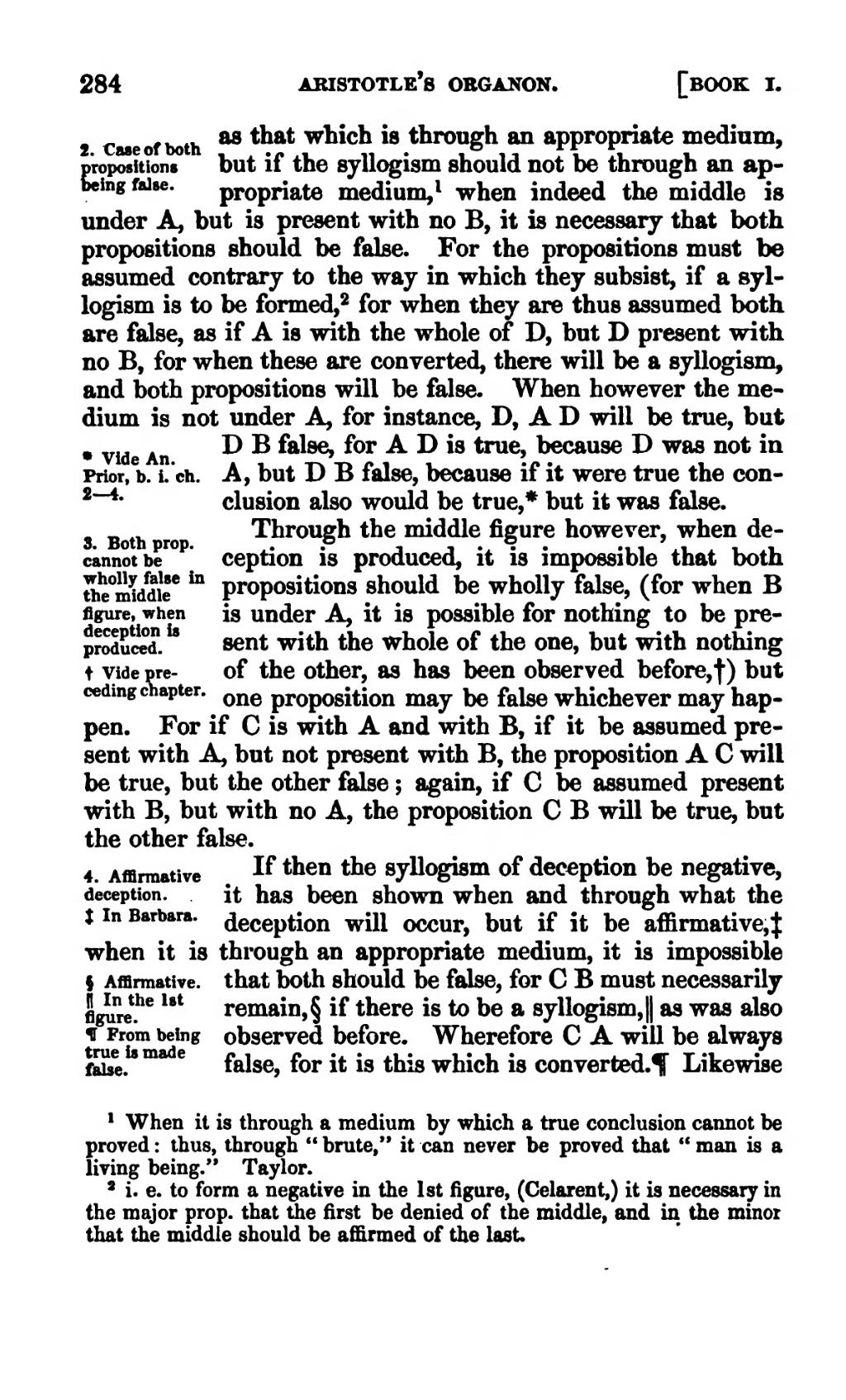as that which is through an appropriate medium, but if the syllogism should not be through an appropriate medium, when indeed the middle is under A, but is present with no B, it is necessary that both propositions should be false. For the propositions must be assumed contrary to the way in which they subsist, if a syllogism is to be formed, for when they are thus assumed both are false, as if A is with the whole of D, but D present with no B, for when these are converted, there will be a syllogism, and both propositions will be false. When however the medium is not under A, for instance, D, A D will be true, but D B false, for A D is true, because D was not in A, but D B false, because if it were true the conclusion also would be true, but it was false.
Through the middle figure however, when deception is produced, it is impossible that both propositions should be wholly false, (for when B is under A, it is possible for nothing to be present with the whole of the one, but with nothing of the other, as has been observed before,) but one proposition may be false whichever may happen. For if C is with A and with B, if it be assumed present with A, but not present with B, the proposition A C will be true, but the other false; again, if C be assumed present with B, but with no A, the proposition C B will be true, but the other false.
If then the syllogism of deception be negative, it has been shown when and through what the deception will occur, but if it be affirmative, when it is through an appropriate medium, it is impossible that both should be false, for C B must necessarily remain, if there is to be a syllogism, as was also observed before. Wherefore C A will be always false, for it is this which is converted. Likewise
